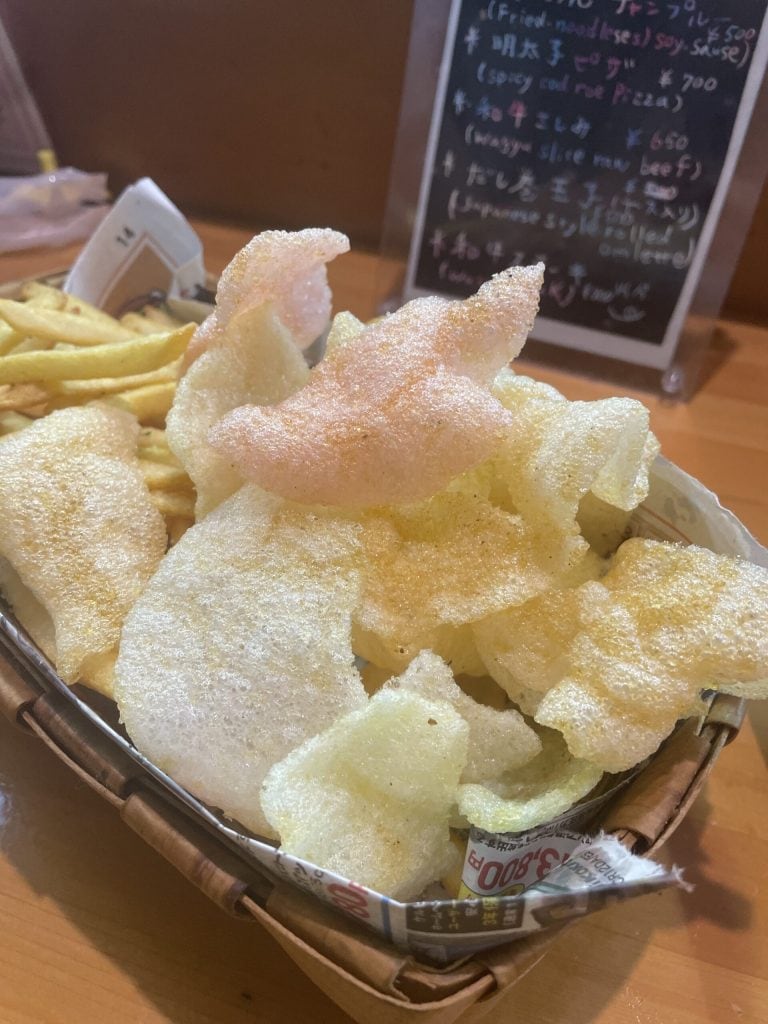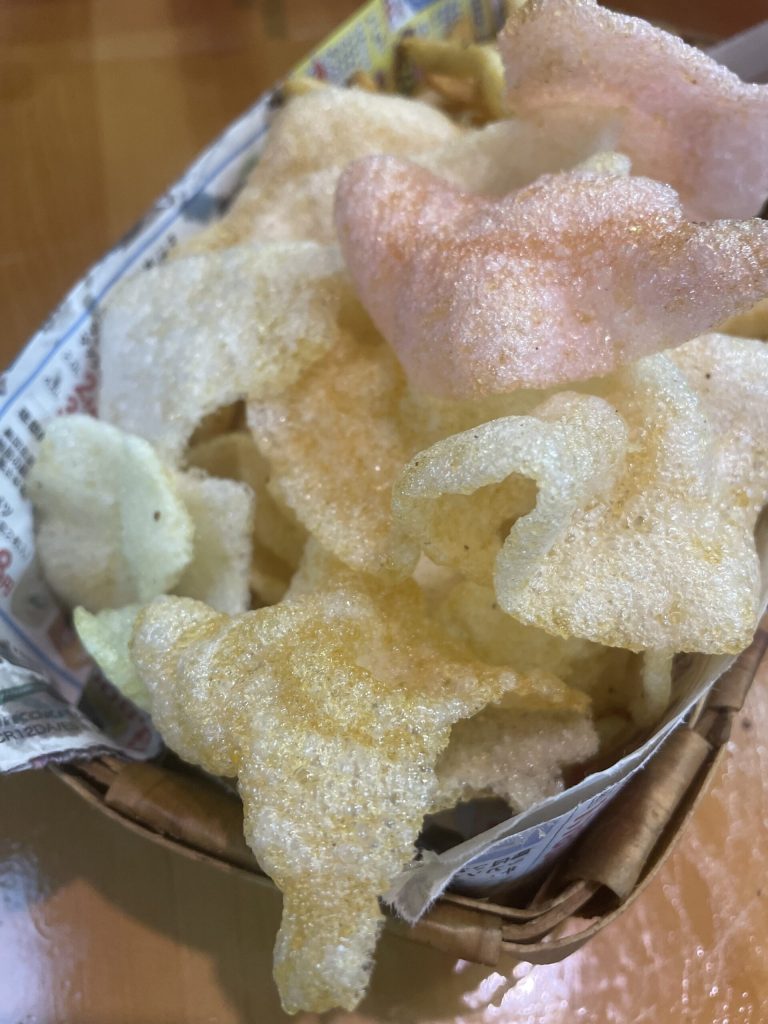The Age Senbei (揚げせんべい) is a variety of senbei (Japanese rice crackers) fried, unlike the traditional ones which are dried or oven-baked.
Made with glutinous rice (more traditional version) or rice flour (simplified version), it is known for its crunchiness and salty or sweet flavor depending on the seasonings.
The shape is typically flat and round, similar to a cracker or a crunchy biscuit.
Traditional Age Senbei recipes mainly vary by using sugar for the sweet version or salt for the salty one.
There is also a simpler version of age senbei, made with rice paper and fried in oil, which we tasted during our trip to Okinawa (see photo) in March 2025. The resulting senbei is crunchy and salty, perfect as a snack.
The Japanese Age Senbei (simplified version) can be described as the Japanese Dragon Clouds; both are fried preparations, although they have a very different ingredient base.
The following is the traditional recipe – for the simplified one, scroll to the bottom.

- Difficulty: Easy
- Cost: Very cheap
- Preparation time: 30 Minutes
- Portions: 25 Pieces
- Cooking methods: Frying, Steaming
- Cuisine: Japanese
- Seasonality: All seasons
Ingredients
- 1 1/2 cups glutinous rice (or rice flour)
- 1/4 cup water
- 1 teaspoon soy sauce
- to taste salt (or mirin 1 teaspoon)
- 1/2 teaspoon sugar
- to taste sesame oil
Steps
If using glutinous rice, rinse it well and boil until soft.
Steam the rice or cook in a steamer for 20-30 minutes until the rice is soft and translucent.
Once cooked, transfer the rice to a container and mash it with a fork or pestle until sticky. Add the water.Add the soy sauce, salt, and sugar, mixing well.
For a salty version, you can add just salt or a bit of mirin.
N.B. Alternatively, you can use rice flour (to simplify the process) mixed with salt and sugar to get a similar consistency. Then add the soy sauce and gradually the water (100ml). Mix well until you get a soft dough, but firm enough to be shaped. You might need to add more or less water depending on the consistency of the rice flour.
Take small amounts of dough and flatten them on a sheet of parchment paper to form thin discs about 1 1/2 to 2 inches in diameter.
Let them air dry for a while to get the right consistency before frying.
Heat the oil in a deep pan to 340°F and fry the senbei until golden and crispy.
Once fried, place the senbei on paper towels to remove excess oil.
For the simplified recipe:
Ingredients (for 1 person):
1 rice paper sheet
5 tablespoons of cooking oil (for frying)
A pinch of salt
Procedure:
Put the oil in a pan and heat it to about 355°F.
Break the rice paper sheet into small bite-sized pieces with your hands.
Add the rice paper pieces to the hot oil and fry.
Once fried, add some salt to taste and serve them.
Tips:
The rice paper fries very quickly, so be careful not to burn it.
Immediately remove the fried pieces from the oil to prevent them from absorbing too much oil.
If you want to customize the recipe, you can add spices like black pepper or wasabi powder for a spicy kick.
FAQ (Questions and Answers)
What are the differences between age senbei and dragon clouds?
Dragon clouds are a popular Southeast Asian appetizer made from tapioca flour or similar flours (like rice flour) and seafood (shrimp, fish, etc.).
The dough is wrapped around the filling and fried until crispy and golden.
The sheet is thin and crumbles easily when bitten.
They are made by mixing tapioca flour with water to get a soft dough, then rolled out and used to wrap assorted seafood, which is fried together.
The tapioca dough provides a soft and somewhat gelatinous texture inside.
Main differences:
Dragon Clouds are made with tapioca flour and contain seafood or meat as filling.
Age Senbei are made with rice flour or glutinous rice and are generally filling-free, crispy on the outside, and rather simple in flavors.

